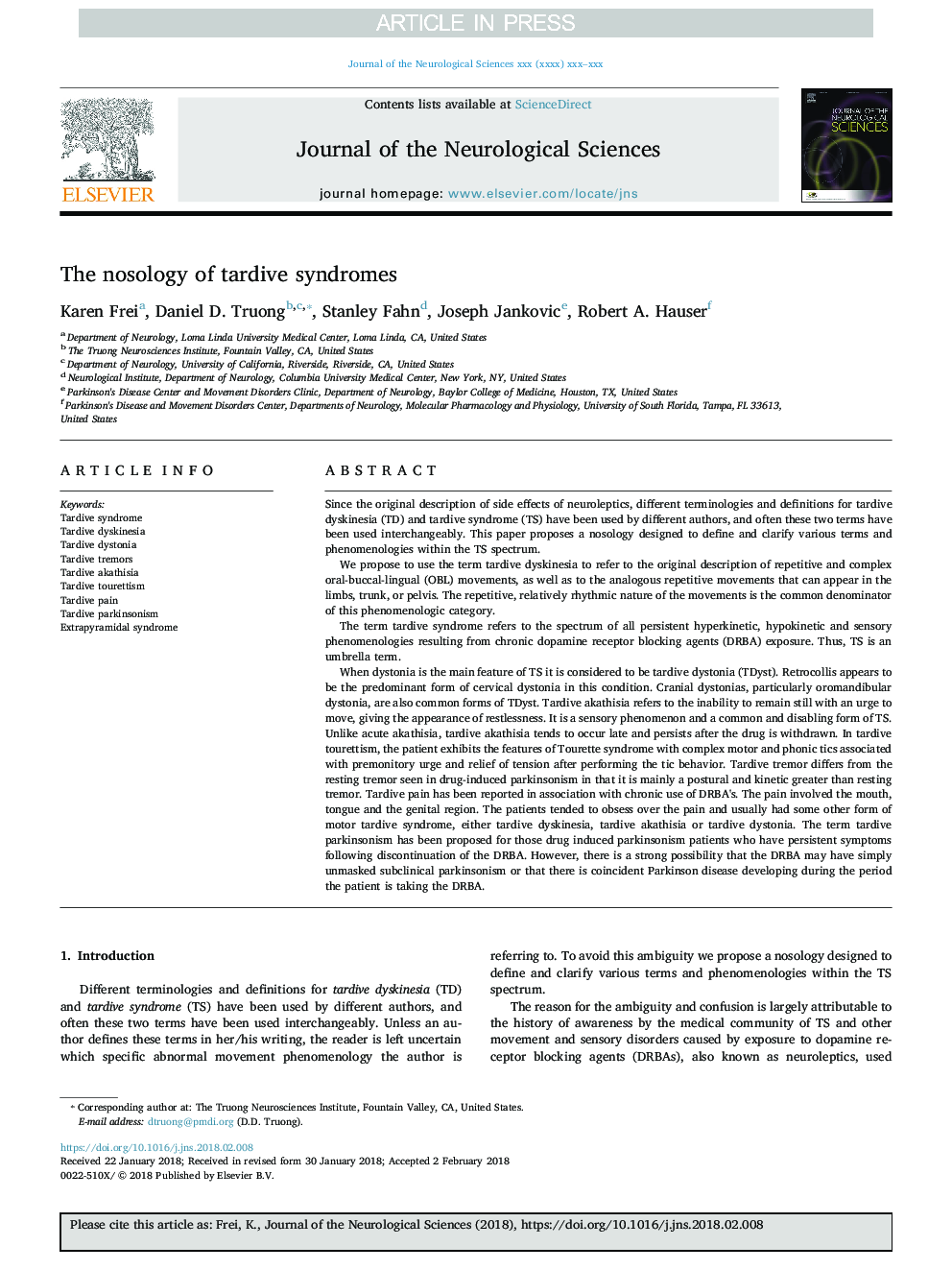| Article ID | Journal | Published Year | Pages | File Type |
|---|---|---|---|---|
| 8272450 | Journal of the Neurological Sciences | 2018 | 7 Pages |
Abstract
When dystonia is the main feature of TS it is considered to be tardive dystonia (TDyst). Retrocollis appears to be the predominant form of cervical dystonia in this condition. Cranial dystonias, particularly oromandibular dystonia, are also common forms of TDyst. Tardive akathisia refers to the inability to remain still with an urge to move, giving the appearance of restlessness. It is a sensory phenomenon and a common and disabling form of TS. Unlike acute akathisia, tardive akathisia tends to occur late and persists after the drug is withdrawn. In tardive tourettism, the patient exhibits the features of Tourette syndrome with complex motor and phonic tics associated with premonitory urge and relief of tension after performing the tic behavior. Tardive tremor differs from the resting tremor seen in drug-induced parkinsonism in that it is mainly a postural and kinetic greater than resting tremor. Tardive pain has been reported in association with chronic use of DRBA's. The pain involved the mouth, tongue and the genital region. The patients tended to obsess over the pain and usually had some other form of motor tardive syndrome, either tardive dyskinesia, tardive akathisia or tardive dystonia. The term tardive parkinsonism has been proposed for those drug induced parkinsonism patients who have persistent symptoms following discontinuation of the DRBA. However, there is a strong possibility that the DRBA may have simply unmasked subclinical parkinsonism or that there is coincident Parkinson disease developing during the period the patient is taking the DRBA.
Related Topics
Life Sciences
Biochemistry, Genetics and Molecular Biology
Ageing
Authors
Karen Frei, Daniel D. Truong, Stanley Fahn, Joseph Jankovic, Robert A. Hauser,
